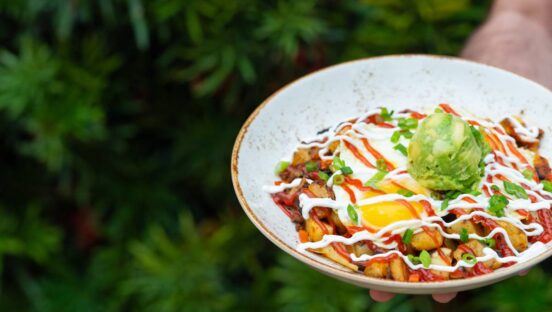



New cooking trends are growing in popularity, but don’t think they’re just a fleeting fad.
A 2018 Foodable Labs study saw a 51 percent jump in vegan menu offerings, and a survey earlier this year from the National Restaurant Association noted that three out of four chefs believe CBD cooking will grow in areas where it’s legal. Not to mention, gluten-free dishes continue to pop up at a wide variety of restaurants nationwide.
While these three trends might seem subtle, each requires some special care in your kitchen. From the setup of your commercial kitchen to the handling of ingredients, there are certain procedures you should follow to accommodate health-conscious consumers. Here are a few tips to consider.
A commercial kitchen operates efficiently when it’s organized into designated zones. Many restaurants break down their space into stations for prepping, cleaning, baking and both hot and cold cooking. If your menu includes different vegan and vegetarian dishes, consider separate spaces for handling just those items. Creating subzones reduces the chances of unwanted ingredients from accidentally making their way into those foods. For example, you don’t want a hint of crumbled bacon coming in contact with a plant-based burger you’re preparing. Vegan and vegetarian patrons will certainly appreciate the extra measure.
The same should go for gluten-free dishes – don’t assume every guest ordering one of these options is only doing so for the health benefits. Gluten is a protein commonly found in different grains and wheat. Health issues like celiac disease can make it difficult to digest or break down gluten, causing harsh reactions and possible damage to the small intestine. Having separate stations for making gluten-free foods can help keep traces of the protein out of the alternative recipes you prep or cook.
If you plan on creating more types of alternative faire, you also might want to purchase separate equipment. That means one set of mixers, food processors, steamers and other countertop units can be designated for specialized dishes while the other set can be used for the standard items on the menu.
You always should be mindful of storing different types of foods and ingredients. When it comes to vegan foods, create separate compartments for those products. For instance, if you have multiple refrigeration units in your kitchen, devote a couple of shelves or an entire unit to items that need to be cooled. Tofu, plant-based proteins and alternative milks are just a few examples of ingredients that need to be refrigerated. This gives kitchen staff easy access to all your vegan products and avoids higher chances of mixing up ingredients.
Labeling items is a must, especially when it comes to dry ingredients. Whether it’s one shelf or an entire pantry, be sure each container is clearly labeled. As mentioned earlier, keeping any traces of gluten out of gluten-free dishes is crucial. A Columbia University study from earlier this year found that more than half of gluten-free pizza and pastas tested at restaurants had gluten present in them. Taking this extra step helps ensure your customers get the exact food they order, creating the best possible experience.
This also is a good practice with CBD-infused ingredients, such as spices and oils. In states where it’s legal, some restaurants are adding less than 0.3 percent of hemp-derived CBD oil to select items on the menu. Like any other oil in your kitchen, it should be stored in a dry, dark space. While you can refrigerate the oil, it may thicken and need to be heated before use.
Cleanliness is key in any commercial kitchen, but it’s even more important when handling a wide variety of specialized foods. Aside from adding zones, make an easy checklist for washing fresh ingredients and cleaning each station properly.
For instance, some vegan and health-conscious recipes call for organic ingredients. Unlike standard crops that use pesticides to fight off germs and bugs, organic fruits and vegetables require more than a quick rinse. Remind your staff they’ll need to wash any organic produce thoroughly. If you notice a lot of dirt, specifically on leafy greens, consider spraying or soaking the produce in a mix of water and vinegar before rinsing.
To avoid cross-contamination of ingredients, you also should post specific guidelines for cleaning areas where your different foods are handled. For example, when making gluten-free dishes, emphasize that each station should be wiped down thoroughly before prep or cooking begins. This helps reduce the risk of unwanted traces of gluten from getting into these special foods. Also, if your establishment does CBD cooking, make sure stations where those foods are handled are carefully cleaned. That way residue from any oil or spices don’t make their way into your other items on the menu.
Matt Gentile is a Content Cook (a.k.a. Content Specialist) with Parts Town, the market-leading distributor of genuine OEM foodservice equipment parts. Parts Town has the most in-stock parts on the planet to help repair commercial kitchen equipment for chain restaurants, institutions, independent restaurants and more.










